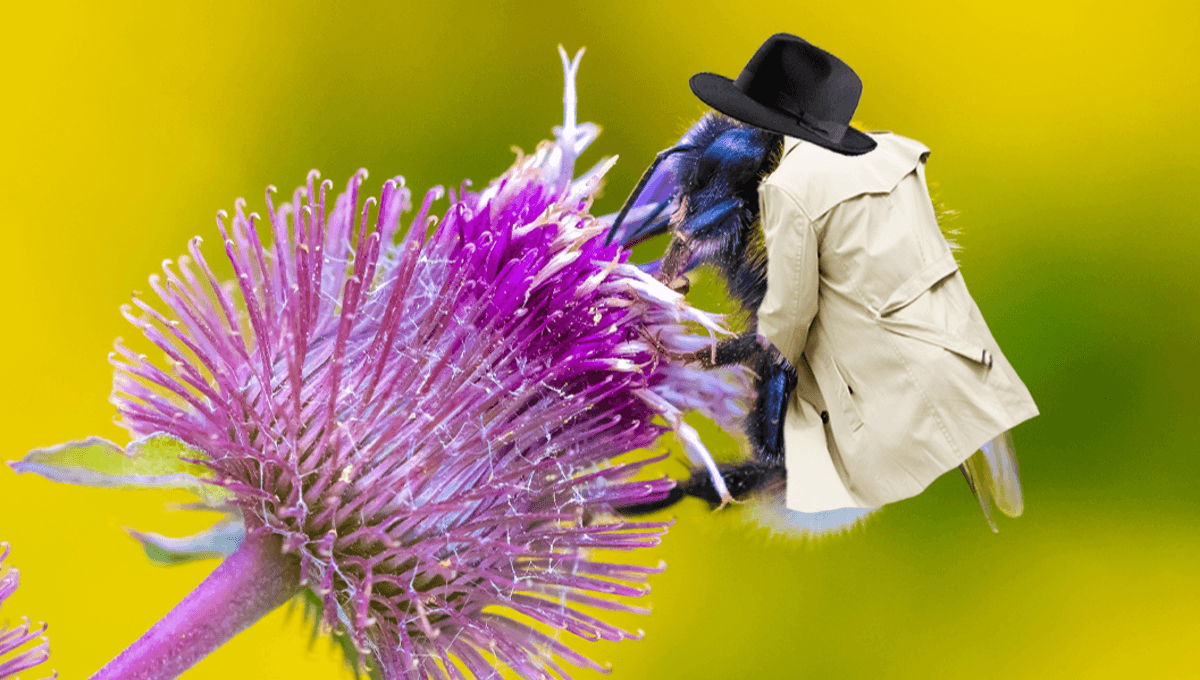
There are, in other words, plenty of potential candidates. But a new study presents an alternative contender: the humble bumble.
“We wanted to find out if bumblebees could learn the difference between […] different durations” of flashing lights, explained Alex Davidson, a PhD student in the Queen Mary University of London’s School of Biological and Behavioral Sciences, in a statement. “And it was so exciting to see them do it.”
That’s right: bees, it turns out, can use Morse code.
Now, we know what you’re thinking: how does one go about teaching a bumblebee Morse code? And unsurprisingly, the answer can basically be summed up as “tricking them with sugar” – or, as the team term it in the paper, “appetitive feeding solutions”. First, the team allowed the bees into a small chamber, where they would find two flashing circles – one quick, and the other slow. Under one, there was a sugar solution, which bees like; under the other, there was quinine, which they don’t.
Once the bees seemed to have the link sussed out, they were admitted into the testing phase – pretty much the same setup, but with plain water under the flashing circles. The question was this: now that the sugar and quinine were gone, would the bees take their cues from the circles instead?
If they went for the correctly-timed circle, it would be a really good sign that the buzzing critters can differentiate between fast and slow flashes – a skill that has so far never been seen in invertebrates. And, as simple a task as we consider it to be, there’s good reason to think that insects may find it much more difficult; while our own brains host some 86 billion neurons, bees’ sesame-seed-sized brains have fewer than one million.
Imagine the researchers’ excitement, then, when more than 80 percent of the bees were able to fairly reliably choose the correct flash duration – even when no sugar solution was present. “Since bees don’t encounter flashing stimuli in their natural environment, it’s remarkable that they could succeed at this task,” Davidson said.
It’s no doubt good news for anybody wanting to send clandestine messages through an apiary – and it has some important implications in seemingly unrelated areas of science. The results are “evidence of a complex task solution using minimal neural substrate,” said Elisabetta Versace, Senior Lecturer in Psychology at Queen Mary and coauthor of the study, and could serve as inspiration for “complex cognitive-like traits in artificial neural networks, which should seek to be as efficient as possible to be scalable.”
But for the researchers, the experiments raise an arguably even more interesting question, namely: given the minute size of the bees’ brains, why do they even have this talent?
Perhaps, they suggest, it’s a happy side effect of some other, more useful skill – an extension of the species’ communication or movement processing. “Many complex animal behaviors, such as navigation and communication, depend on time processing abilities,” pointed out Versace.
“It will be important to use a broad comparative approach across different species, including insects, to shed light on the evolution of those abilities,” she added.
But maybe it’s simpler than that. “This surprising ability to encode and process time duration might be a fundamental component of the nervous system that is intrinsic in the properties of neurons,” Davidson said. “Only further research will be able to address this issue.”
The study is published in the journal Biology Letters.
Source Link: First-Of-Its-Kind Evidence Shows Bees Can Learn "Morse Code" – Well, Kinda